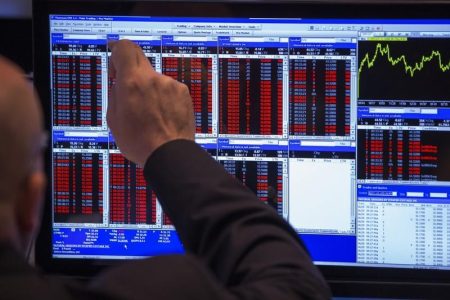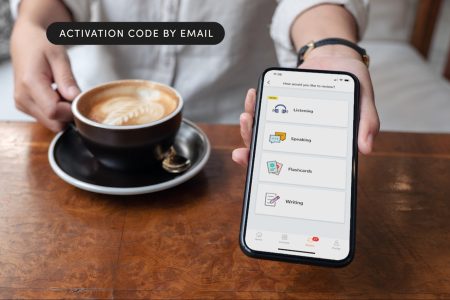For students, the start of a new school year is a time to show off their back-to-school swag. For parents and teachers, it’s a time to gripe about how much that new swag cost.
Expect the older generation’s grumbling to get a little louder this year. While overall inflation is finally cooling, two-thirds of shoppers say they’ve noticed higher prices on back-to-class items, according to an annual survey from the National Retail Federation, a retail trade group.
“Things are so much more expensive than they were in the past, so we have less money to spend on resources for school,” says Nicholas Ferroni, a New Jersey high school teacher. Parents tell him they’re feeling the squeeze too, he adds, wondering whether some will send their kids back to class with fewer supplies, hoping the school can make up the difference.
Add to higher prices an ever-ballooning shopping list: Schooling in the modern era means not just pencils and notebooks, but also increasing requirements for laptops and tablets—not to mention kids’ endless thirst for whatever cool sneaker or backpack is currently trending on social media.
With the first day of school around the corner for many, the question for the retail industry is whether parents will tick off their lists despite higher prices—or whether economic concerns and tighter budgets will prompt them to scale back.
The forecasts don’t provide much clarity. The NRF is betting on a blowout season, estimating that back-to-school shopping will hit a record $41.5 billion, up from $36.9 billion last year. That number is based on a survey of more than 7,800 consumers with children in elementary through high school, which found that families plan to spend an average of $890.07, about $25 more than last year.
Deloitte also publishes an annual back-to-school survey, and its findings suggest a more modest year. The company’s survey of 1,200 households with school-age children found that respondents planned to spend $597 per child, 10% less than in 2022—the first time since 2014 that the survey has indicated a spending pullback.
These are far from the only murky forecasts to plague retail in 2023. The volatile macroeconomic environment of the past year has made it particularly difficult for analysts or retailers to get an accurate read on consumer behavior. What’s more, consumers have proved surprisingly resilient for the better part of the last two years, bucking expectations that they would buckle under high inflation and rising interest rates. Part of that resilience stems from a strong labor market and wage gains, experts say, as well as some pandemic-era savings cushions.
Indeed, retail sales are still healthy, rising 0.2% in June and 1.5% compared with last year, and consumer confidence and sentiment are both rebounding to their highest levels since 2021. Major players in the school supply space have also sounded upbeat about the sales prospects for back-to-school.
“We remain optimistic on the back-to-school season, which kicks into full gear in the coming weeks,” said Christopher Peterson, CEO of
Newell Brands,
parent company of Sharpie and PaperMate, on the company’s latest earnings call.
There are signs, however, that shoppers’ willingness to spend may now be cooling. The personal savings rate has come down from its 2020 high, household debt is on the rise, and while retail sales are still growing, they are doing so at a slower rate each month. Recent earnings reports from restaurants and consumer staple companies also suggest that Americans may finally have hit a wall with price increases and are starting to buy fewer things.
That could mean trouble for back-to-school. Prices for stationary and stationery supplies were 9.6% higher in June compared with last year, while clothing is up 3.1%, according to the latest consumer-price index report. Equipment for extracurricular activities is more expensive as well, with the index for recreation commodities up 2% year-over-year. The headline figure for overall inflation was 3%.
To be sure, some categories are seeing prices come down from their 2022 highs. Footwear is more affordable, as are electronics, sporting equipment, and textbooks. But that may not be enough to put shoppers at ease, says Brian McCarthy, a principal in Deloitte’s retail strategy practice. “There’s going to be a lag between the decrease in inflation and how consumers respond to it,” he says.
Despite the variation in their forecasts, the NRF and Deloitte agree on one thing: Until consumers see the impact of declining inflation on their bank accounts, they’re going to be price sensitive. For back-to-school, that means looking for deals earlier in the season, comparing prices online, buying private-label products, couponing, and trimming costs on unnecessary purchases. “They’re seeking value, they’re seeking convenience, and they’re watching carefully where they’re spending their dollars,” says Dana Telsey, analyst at Telsey Advisory Group.
Retailers that are able to offer these shoppers the deals they’re looking for will likely come out ahead—and in a strong position heading into the holiday season. Discount retailers, for instance, are gaining ground as a back-to-school shopping destination, says Katherine Cullen, vice president of industry and consumer insights at the NRF. About 45% of back-to-school shoppers are going to discount stores, up from 40% last year, the NRF found.
“The off-pricers, the
TJMaxxes
(ticker: TJX) of the world, it certainly feels like they could see some of those discerning dollars,” Telsey says. “You also still have the discounters which get a chunk of back to school dollars.”
With competition heating up, retailers have been forced to ramp up their discount game.
Walmart
(WMT) is selling back-to-school items at the same prices as last year.
Target
(TGT) is giving teachers and college students a one-time 20% back-to-school discount, while
Amazon.com
(AMZN) said it offered a record number of discounts during its Prime Day event in July, an event in which many survey respondents said they shopped for school supplies.
Leaning into discounts seems to be working. Most school shoppers—80%—plan to buy some supplies at so-called mass merchants, such as Walmart,
Costco
or Target, while 60% also plan to shop at online-only stores, such as Amazon, according to Deloitte. Ferroni, the New Jersey teacher, says that Target, Walmart, and Amazon are his three go-tos for school supplies because they provide some sort of discount or “freebie.”
Those retailers also tend to be one-stop shops, making them a prime destination for parents looking for convenience. Deloitte’s McCarthy, who has three kids under the age of 10, says mass merchants offer the most variety to account for every child’s preference: “I have a sports personality in my house, a videogamer and a little princess, so we got all that covered in our mass shopping experience.”
Write to Sabrina Escobar at [email protected]
Read the full article here









